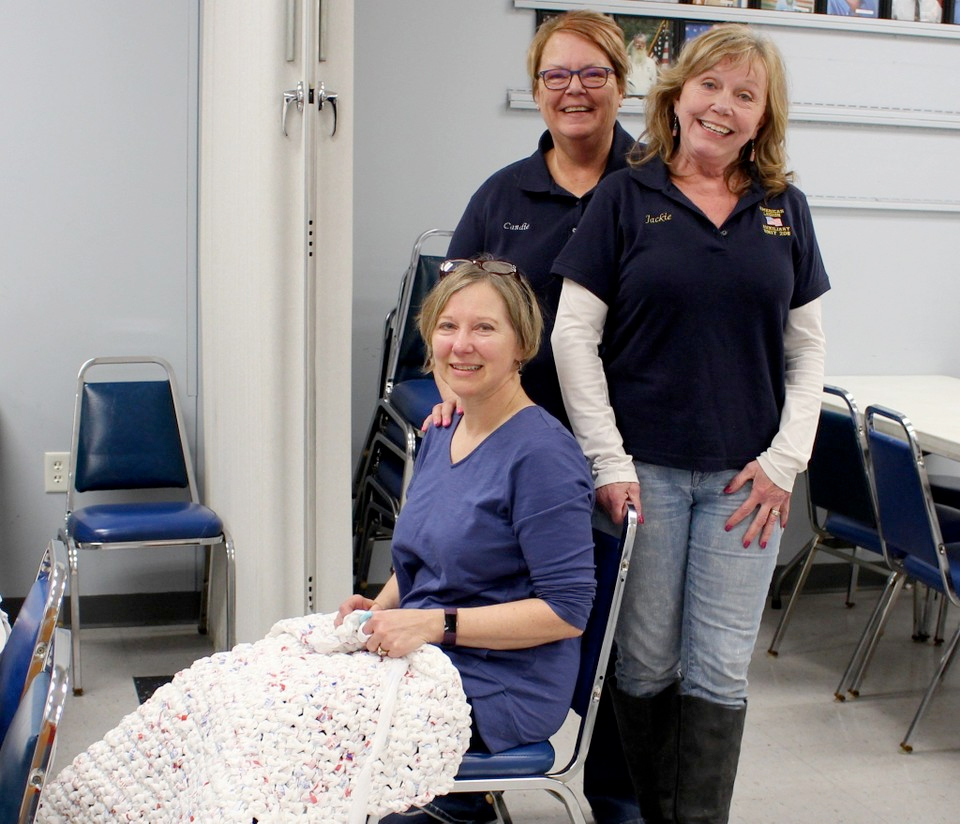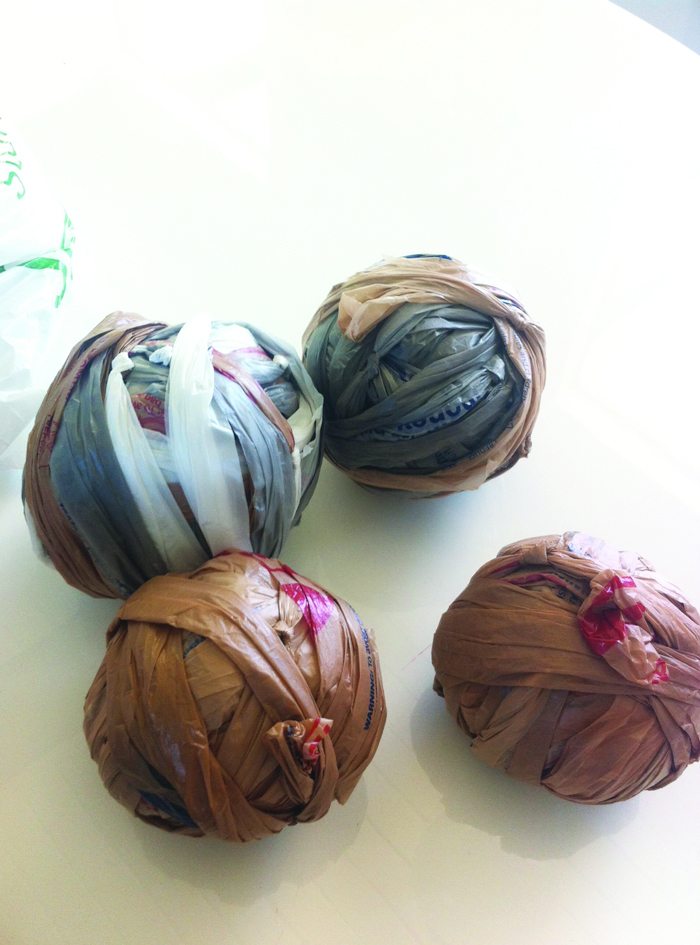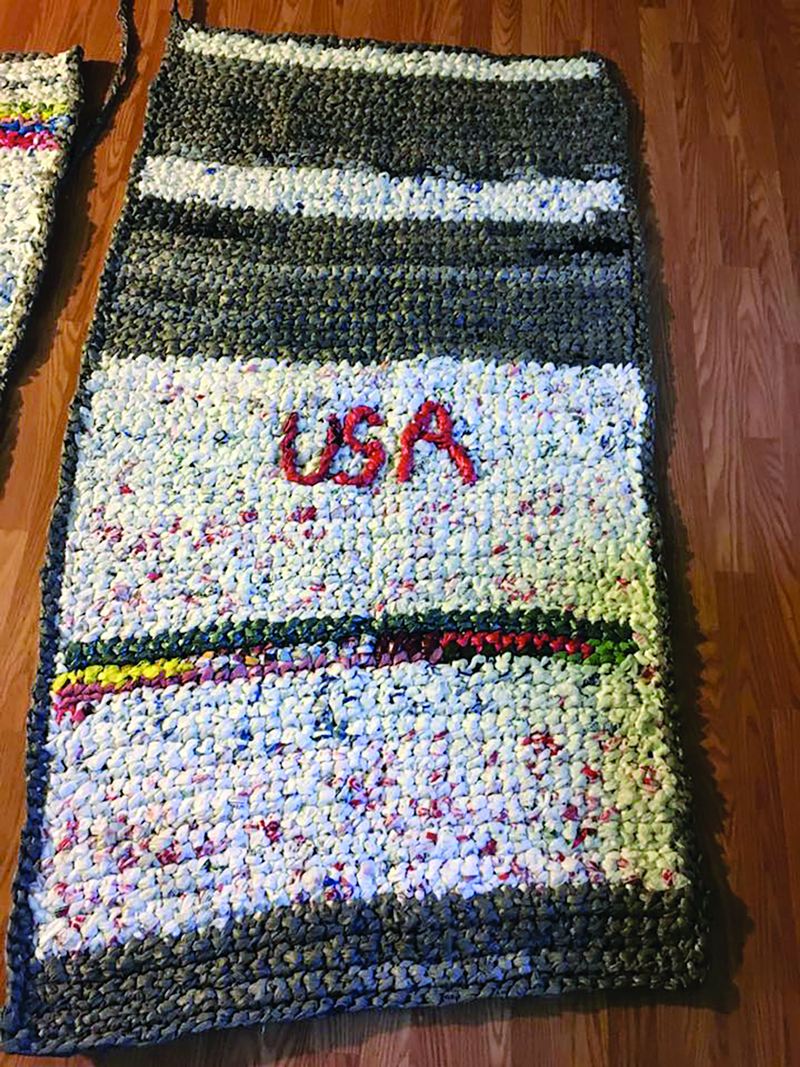Two years after articles were published in the February and May 2016 issues of Auxiliary magazine, units across the country continue to live out the mission of Service Not Self by making sleeping mats out of plastic bags for homeless veterans.
Recently, American Legion Auxiliary Department of Michigan member Jackie Weersing saw the story in that May magazine on how to make a sleeping mat for homeless veterans out of plastic bags. She thought it might be a good project for the Kentwood American Legion Post 208 to take on. The local newspaper picked up the story, helping to further spread the word of what Auxiliary members are doing for our veterans. You can read that story here.

These women helped get the project going at a Michigan unit.
She brought the how-to article to an Auxiliary unit meeting, and since then, several members have been hard at work making the sleeping mats.
These mats were first brought to the attention of ALA National Headquarters from ALA Unit 291 in Newport Harbor, CA. This unit was featured in the February 2016 Auxiliary magazine.
Unit 291’s project, Cucumel’s Compassionate Carpets, helps veterans and the environment.
Each 6-foot-by-2½-foot mat is made from 600 to 700 recycled plastic grocery bags. The mats are lightweight, waterproof, and help keep plastic bags out of oceans and landfills. Each mat takes about 50 hours to make.
The May 2016 Auxiliary magazine featured a follow-up to its Cucumel’s Compassionate Carpets article it published a few months prior. The follow-up article included more details about how to make the mats.
Here are step-by-step directions on how to make a plastic bag sleeping mat:

Part of the process of making the mats involves forming plarn (plastic yarn).

An example of a completed sleeping mat using plastic bags.
For further questions on how to make the mats, email Cucumel’s Compassionate Carpets at mats4vets@gmail.com or visit the group’s Facebook page.
In the spirit of Service, Not Self, the mission of the American Legion Auxiliary is to support The American Legion and to honor the sacrifice of those who serve by enhancing the lives of our veterans, military, and their families, both at home and abroad. For God and Country, we advocate for veterans, educate our citizens, mentor youth, and promote patriotism, good citizenship, peace and security.